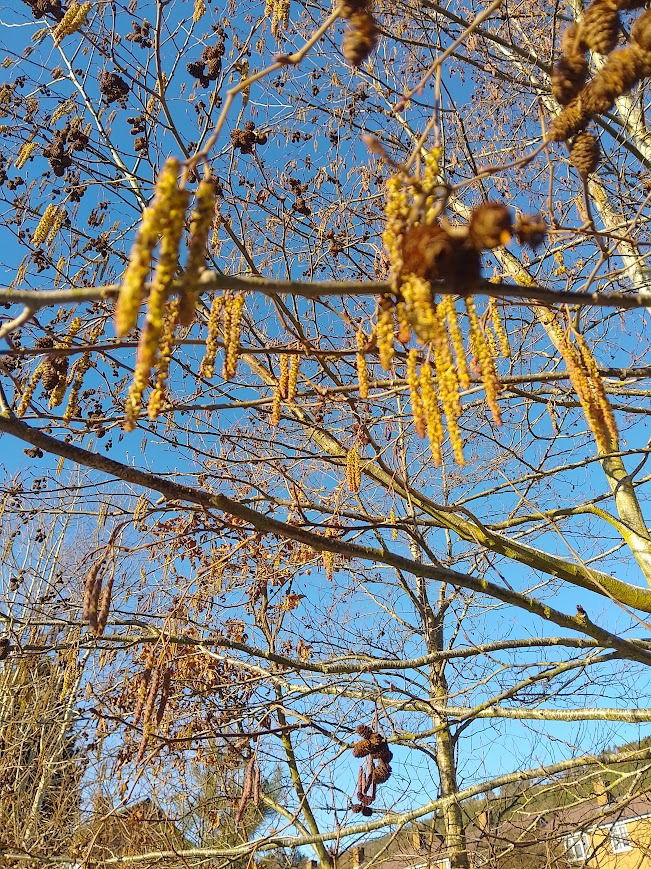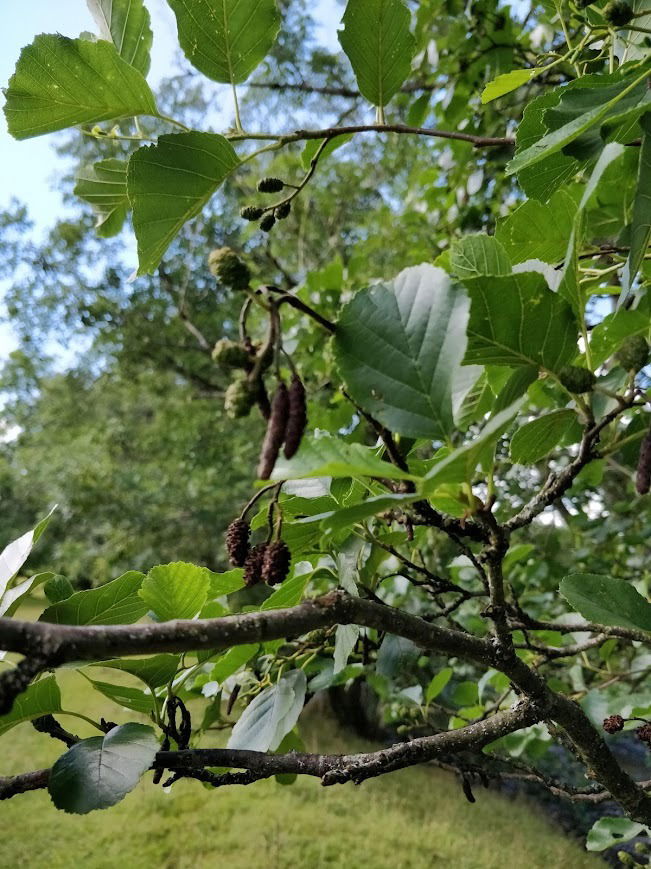Rothbury Tree of the Month: April, Alder
Tuesday, 1 April 2025
Although it is not very long-living, the Alder tree grows fast, and thrives in wet and damp environments.
Alder grow up to 25 metres, and, much like humans, live for about 60-100 years.
The Common Alder's trunk is a dark brown, and a rough texture. The twigs are light brown, with orange coloured spots on them.
April is a good time to take especial notice of the catkins. The Alder has both male and female catkins. The male catkins can be seen from October, they begin to release their pollen by the time February comes around. These catkins begin as green, but turn a browny colour, and eventually drop off. New ones then begin to grow.
The female catkins stay on the tree all year. These look like little cones. The female catkins open and let go of their seed during the autumn and winter.
The old cones cling to the tree all winter, when the new catkins arrive they stand in all their glory.

The wood of the Alder tree is durable, and becomes very strong when submerged in water. Alder wood was very often used for building bridges over water, linking communities together.
One of the reasons for choosing this tree, this month, is because now, more than ever, it feels like we should be building bridges, locally, and in the broader communities.
The Alder too is a tree, which asks us to look beneath the surface. Her roots are friends to nitrogen-fixing bacteria. The bacteria attaches to the roots. The Alder is known as the 'nurse tree'. They bring great benefits to surrounding plants and trees. They are pioneers, like the Silver Birch, and change the soil to allow new growth.

Alders can be coppiced time and time again. When they are cut this way, they produce fascinating bulbous bases, and lots of lovely red coloured shoots grow up from there. These shoots are great for weaving, as they are very flexible.
So let us give thanks for the generous Alder. Do let me know if you see any good specimens, in and around Rothbury?
